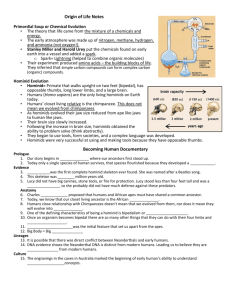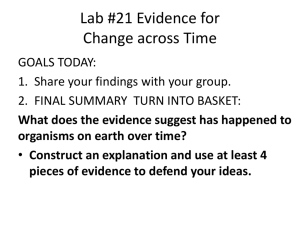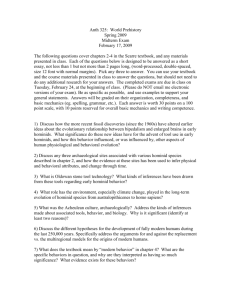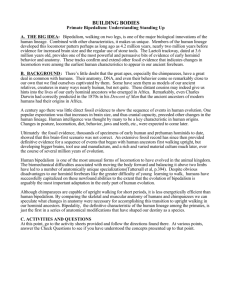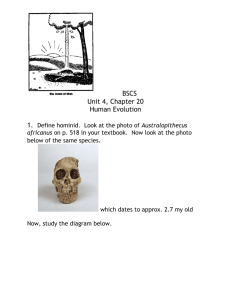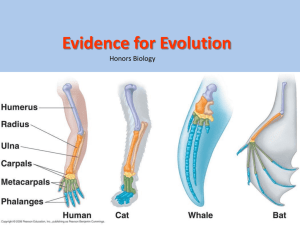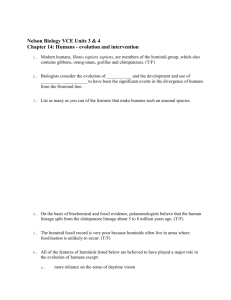L.15.1 Evidence for Evolution
advertisement
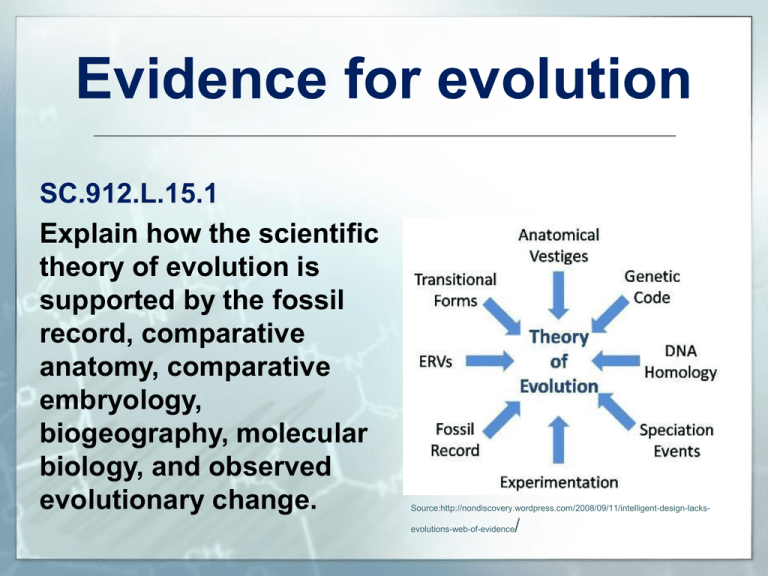
Evidence for evolution SC.912.L.15.1 Explain how the scientific theory of evolution is supported by the fossil record, comparative anatomy, comparative embryology, biogeography, molecular biology, and observed evolutionary change. Source:http://nondiscovery.wordpress.com/2008/09/11/intelligent-design-lacks- / evolutions-web-of-evidence What do I need to know? how the theory of evolution is supported by evidence from the fossil record, comparative anatomy, comparative embryology, biogeography, molecular biology, and observed evolutionary change. trends in hominid evolution from early ancestors to modern humans including brain size, jaw size, language and manufacture of tools. the differences between a scientific theory and a scientific law and know how a theory is developed over time. Evidence for evolution Major types of evidence used to support the theory of evolution include the fossil record, comparative anatomy, comparative embryology, molecular biology & biogeography. Source:http://nondiscovery.wordpress.com/2008/09/11/intelligent-design-lacks- / evolutions-web-of-evidence Evidence for evolution Guiding Questions: 1) What sources of evidence did Charles Darwin use to support his ideas on evolution? 2) What new sources of evidence for evolution do we have today that Darwin did not have? Video: https://www.youtube.com/watch?v=ooGKYediys8 Hominid evolution Over the last 7 million years several species of hominids have existed. Major changes seen in hominid evolution have included increase in cranium and brain size, standing upright (bipedal), the use of tools and development of language. Source: http://evolution.berkeley.edu/evolibrary/images/evo/hominid_graph.gif Hominid evolution Guiding Questions: 1) How did physical features of hominids such as the cranium and face size change over the last 2.5 million years? 2) What trend is evident in the tools hominids used? 3) How does the change in cranium size relate to changes in tools and behavior of hominids? Video: https://www.youtube.com/watch?v=RQ7VUZHwbEk Theory vs Law A scientific theory is a well tested explanation for a phenomenon. Theories can be refined or discarded as new evidence is discovered. A scientific law is a description of an event and will always hold true under a certain set of circumstances. Show What You Know The diagrams below show the skeletons of two different animal species. How does comparing the skeletons of these animals provide support for the scientific theory of evolution? A. It provides information about the organisms' habitats. B. It shows possible common ancestry between organisms. C. It provides information to determine the organisms' ages. D. It shows possible chromosomal similarities between organisms. Show What You Know Which of the following correctly describes the general trend in hominid evolution? A. larger body size, broad forehead, smaller brains B. increase in brain capacity, bipedalism, use of tools C. thickening of the skull, protruding teeth, organized hunting D. large canine teeth, small skulls, diet of coarse plant material Show What You Know Humans and chimpanzees have almost identical DNA and many similarities in anatomy. Which statement about the evolutionary relationship between modern humans and chimpanzees is supported by these facts? A. Humans and chimpanzees are unrelated. B. Humans descended directly from chimpanzees. C. Humans are a more evolved version of chimpanzees. D. Humans and chimpanzees share a common ancestor. Show What You Know Which of the following statements correctly compares a scientific theory and a scientific law? A. A law is a fact and a theory is an opinion. B. A law is a theory that has been proven to be true. C. A law is a description and a theory is an explanation. D. A law is always true and a theory is sometimes true.

